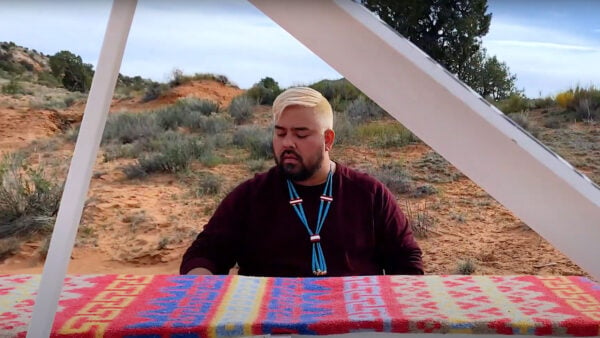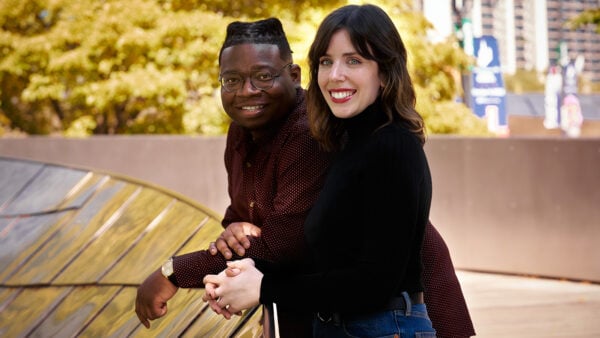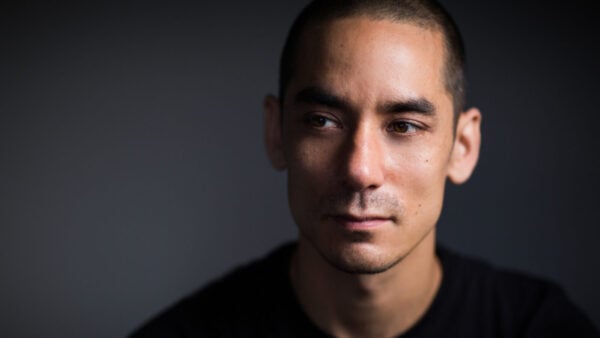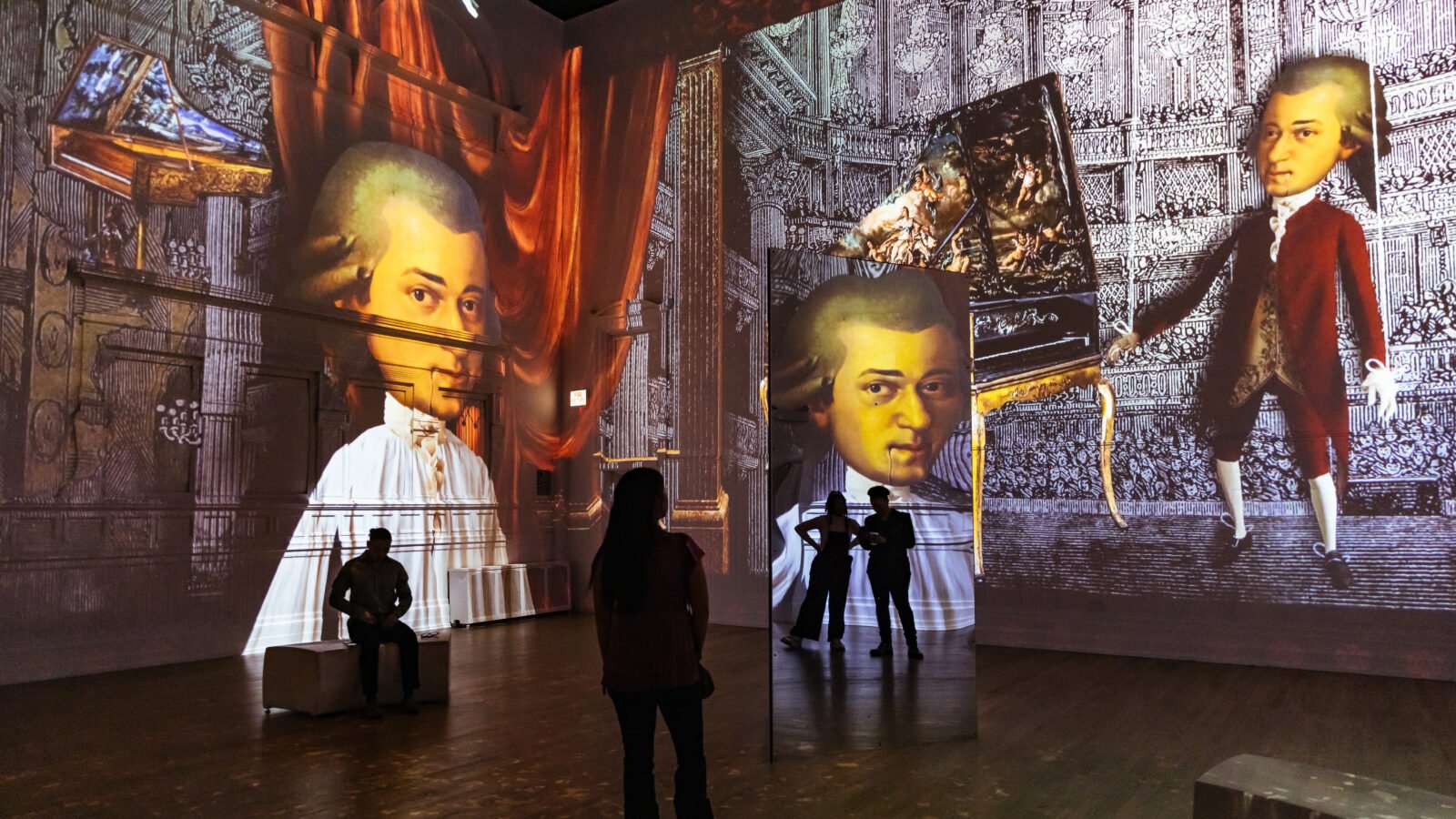
Immersive Mozart (Photo: Kyle Flubacker)
A new exhibit gives audiences a new way to engage with a great figure of classical music. The team behind the successful immersive Van Gogh exhibit returns to Chicago for a world premiere focusing on Wolfgang Amadeus Mozart.
That name means a great many things (and many different things) to a great many people. Perhaps it triggers the melody of a familiar refrain, or evokes fond memories of attending concerts. Maybe it conjures images of a prolific visionary or a boorish man-child. Maybe it intimidates, maybe it inspires. When it comes to Immersive Mozart: The Soul of a Genius, it is clear that any and all of these responses will do.
The Immersive Mozart exhibit is not, stresses Richard Ouzounian, the exhibit’s creative consultant, a direct biographical account of Mozart’s life. Rather, he explains, the experience embodies a heightened, poetic, and sometimes surreal expression of Mozart’s life and work. It’s a 360-degree visual interpretation conceived by contemporary artist Massimiliano Siccardi, who was behind the Van Gogh experience and others in the series.
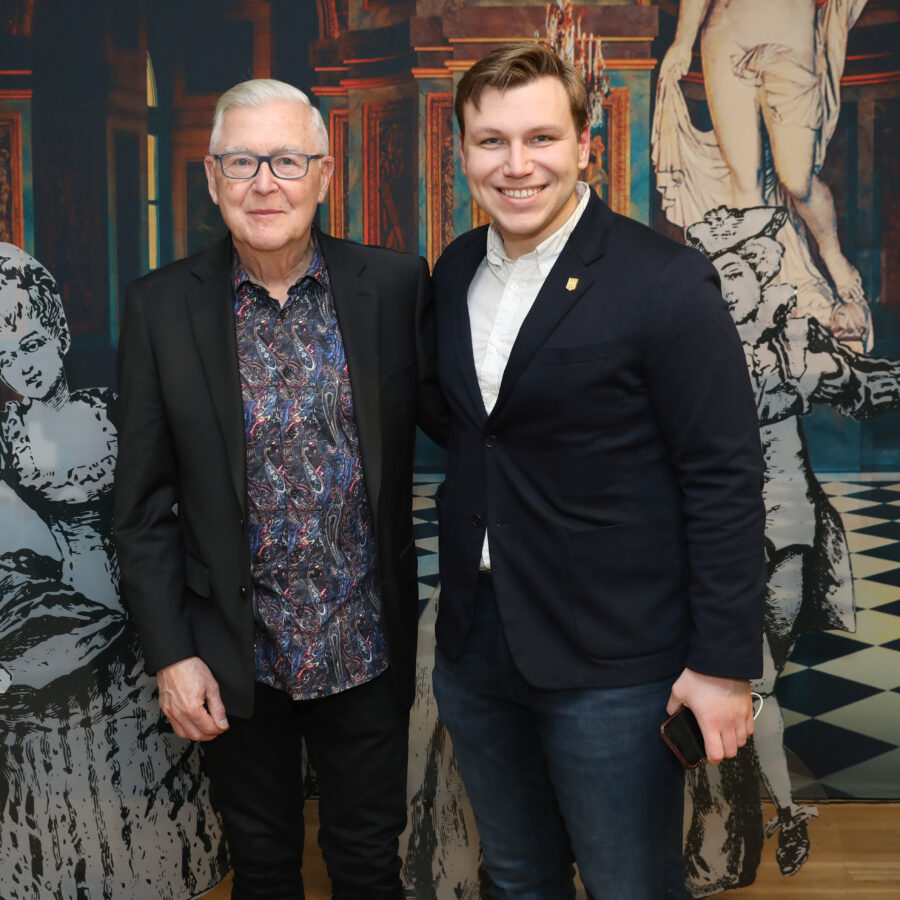
Richard Ouzounian (L) with Valeriy Kostyuk at Immersive Mozart (Photo: Mila Samokhina)
With past shifts in theater and journalism circuits in Toronto, Ouzounian is suited to write a lot when time is little, while also being able to offer advice: “I think that would not be good to interact with” or “watch out for the flow here…” He first worked with Lighthouse Immersive, the Toronto production company behind the presentation, in the lead up to the debut of Van Gogh, its first installation. With about six weeks left before opening, Lighthouse’s founding partners Svetlana Dvoretsky and Corey Ross realized they had no written material — there was no exhibition materials or documentation to help a guest engage with the material. Having worked with Richard in the past, Ross brought him aboard.
Ouzounian now crafts much of the written matter of the exhibits and crisscrosses around the continent, visiting presentations as a spokesperson and ambassador for the subsequent shows focusing on Gustav Klimt, Frida Kahlo, Walt Disney, and in a slight shift, King Tut.
This go-round, though, represents a much larger departure. The Immersive Mozart exhibit is the team’s first music-driven concept. It features bespoke recordings of many of Mozart’s signature and unsung works with a fullscale orchestra conducted by Constantine Orbelian as well as piano selections and recompositions by artist and composer Luca Longobardi. Another intriguing element comes in video form: Michael Baryshnikov lends his legendary physicality and acting prowess to the role of Leopold Mozart.
WFMT spoke with Richard about the creative process behind these presentations, the challenges in building a show around music, and who he hopes will respond with the exhibit.
WFMT: Past exhibitions from your organization have centered on visual artists. How was that different in this case, and what were the challenges of representing Mozart’s art visually?
Richard Ouzounian: There’s kind of a certain template that Van Gogh, Frida, Klimt, Money, and Tut to a lesser degree, all fit. This whole approach is different in how they handle the music and imagery. This is different musically, this is different dramatically than the others.
The approach is kind of surreal; while there’s a lightness to it, there’s also always an edge.
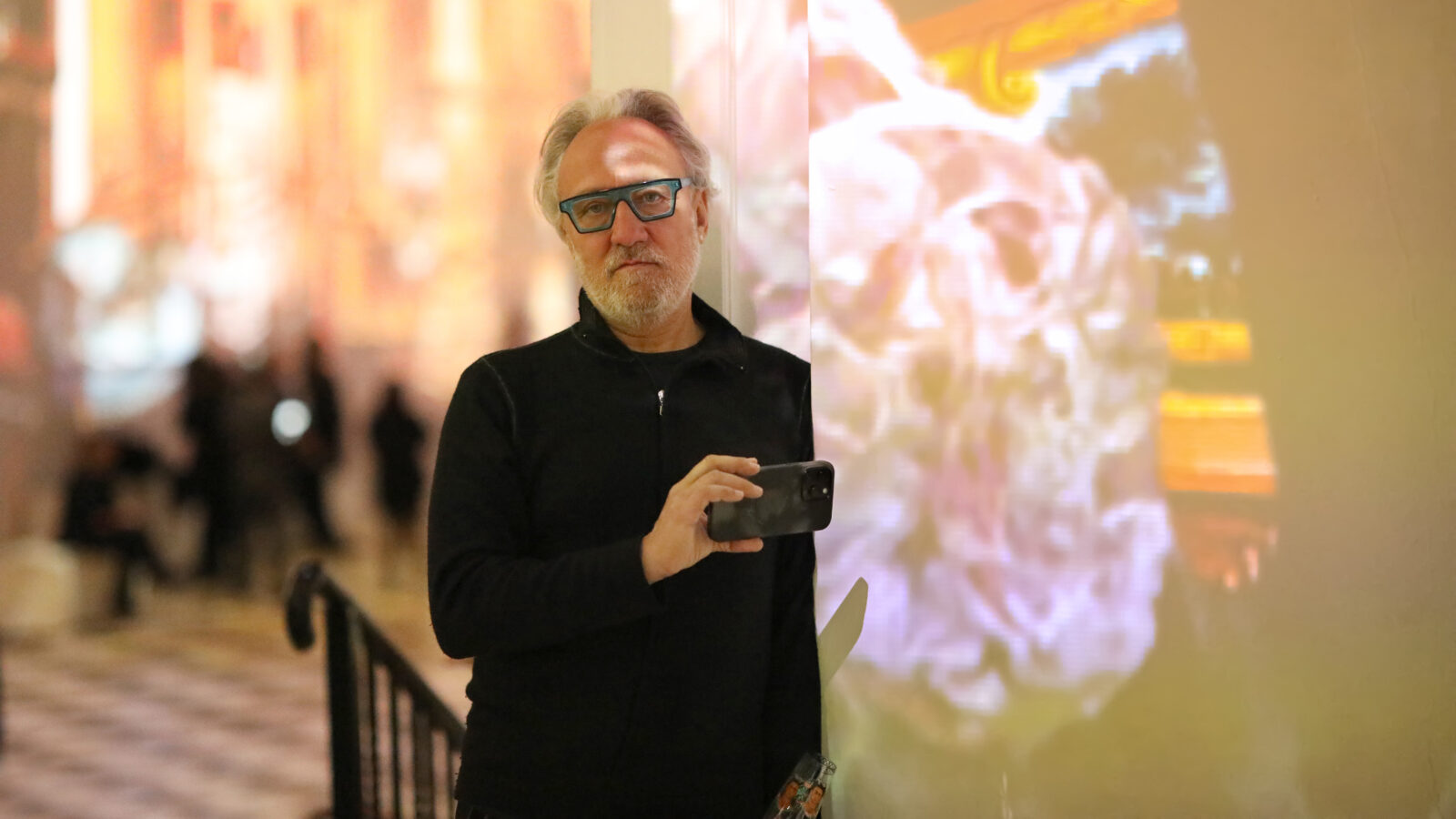
Massimiliano Siccardi at Immersive Mozart (Photo: Mila Samokhina)
Massimiliano absolutely wanted someone of weight and stature to play Leopold, because as we know, Leopold shaped his son’s life. There are many allusions to it in the show; Mozart is portrayed as a marionette, and even though we don’t see it, we know it is Leopold pulling the strings.
Then, when we get to a point late in where Mozart is looking back. That is underscored with the Requiem even though that piece has nothing explicitly to do with his father. And we see Leopold, who is played by Mikhail Baryshnikov. He’s not dancing, but it’s a beautiful scape of candles and staircases and Baryshnikov obviously going through some kind of agony. It’s a fascinating sequence that registers with the music.
WFMT: You bring up the Requiem, which is certainly one of Mozart’s most identifiable works. Talk about the challenges of winnowing down such a huge catalog to represent this narrative. What made it into the final piece? How did that process work? And what were some of the hard choices of music that had to be cut?
Ouzounian: I always try to get into Massimiliano’s head. Not to oversimplify it, but he believes that Mozart was the child who was never allowed to grow up. Because by the time he was three, his father was sending him off to do concerts. He was playing for royalty at age five, and by seven, he was composing. Some of this comes through in Amadeus, the act that he acts out in different ways.
But I think that our presentation gives this surreal quality to this. It is outlined very poetically. And that governed a lot of the music. It is not chronological.
For example, there is a certain point when his career is taking off, and Eine kleine Nachtmusik was chosen for that. But Luca wanted to re-envision it, so he has a whole re-orchestrated section.
The exhibit does lean on The Magic Flute a lot. To Massimiliano, in many ways, it is the apotheosis of Mozart. Not in terms of “this is the best thing he ever wrote,” but in terms of artistic vision. The fact that it combined certain elements of romance, and the Freemasons, and mythology. And yet there’s this childlike joy that makes it appropriate.
One of the other pieces that is central is the Rondo alla Turca. That comes at the very end, after Mozart’s died. Instead of solemnity, a dancing monkey with cymbals comes over the screen. As the music and monkey keep going, a scroll unfurls with the 600-plus works that Mozart composed. To show you can’t capture all of his music.
When everybody saw the rough draft, everybody had their “but why isn’t this piece in it? What about this piece?” I wish there had been more opera, but that’s just my taste. They did not want to turn this into the Mamma Mia of Mozart. This isn’t Mozart’s greatest hits. There are pieces that everyone will know, but a lot of them are not on the nose. And I think that’s good.
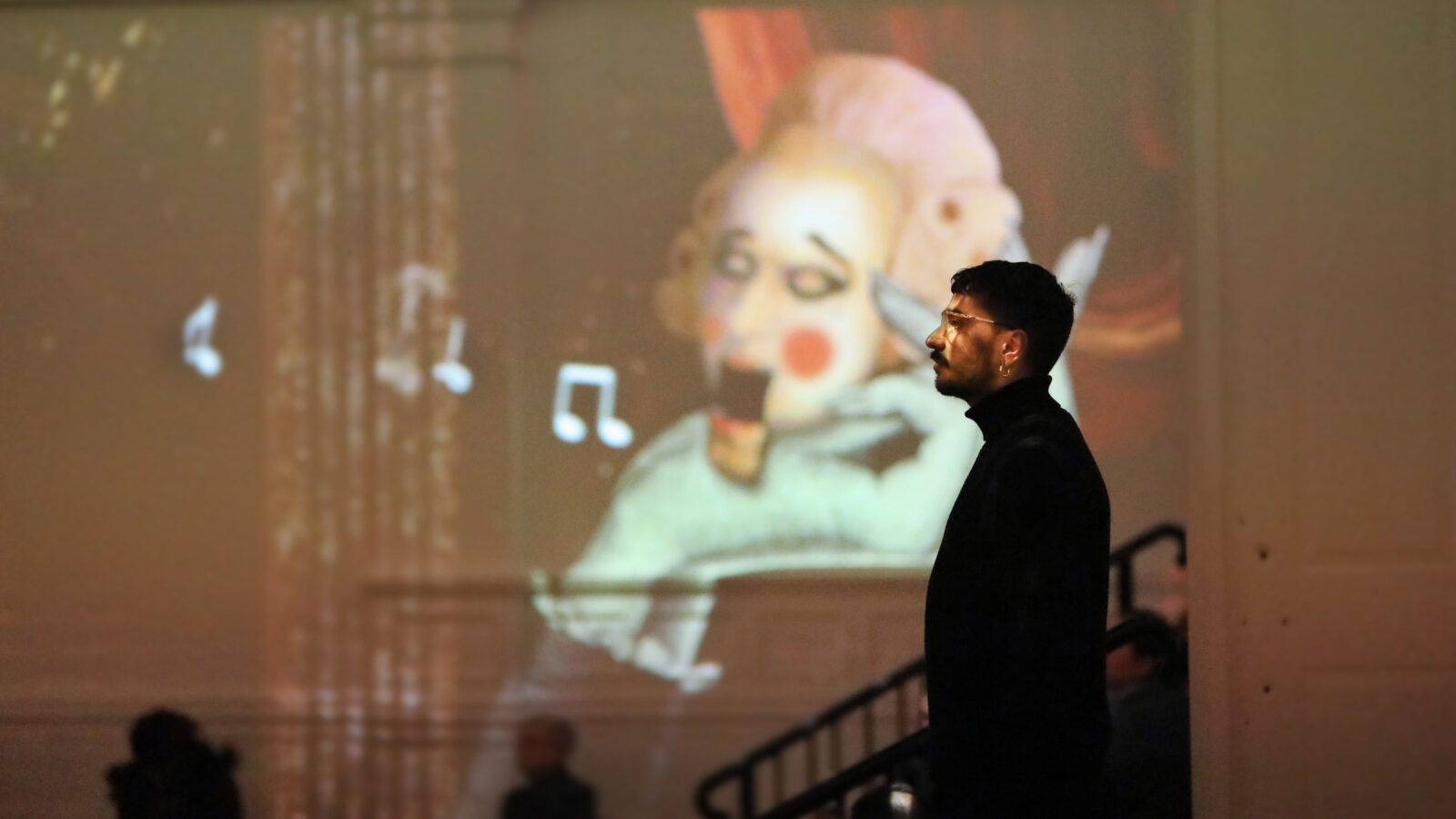
A guest at the Immersive Mozart exhibit (Photo: Mila Samokhina)
WFMT: Each exhibition has focused on an artist or figure with some sort of presence in the popular imagination. Since the goal is not to relay every single last shred of biographical information, what do you hope that it does impart? Who do you hope this exhibit engages with?
Ouzounian: I always, I have a picture in my mind of somebody somewhere between 25 and 40 who knows of Mozart and thinks that this sounds interesting. And then they come to see it and are profoundly moved. And then want to go out and learn a lot more about him.
WFMT: Looking beyond Mozart, are there any particular musical figures that you would be keen on tackling next?
Ouzounian: There are no other composers on our list right away. There is a famous author, a popular pop group, things like that. But if you ask me, the one I’d sell my soul to do is Stephen Sondheim. He’s my god.
Immersive Mozart: The Soul of a Genius runs through May at Lighthouse Artspace Chicago in Old Town. For information, visit mozartimmersive.com


